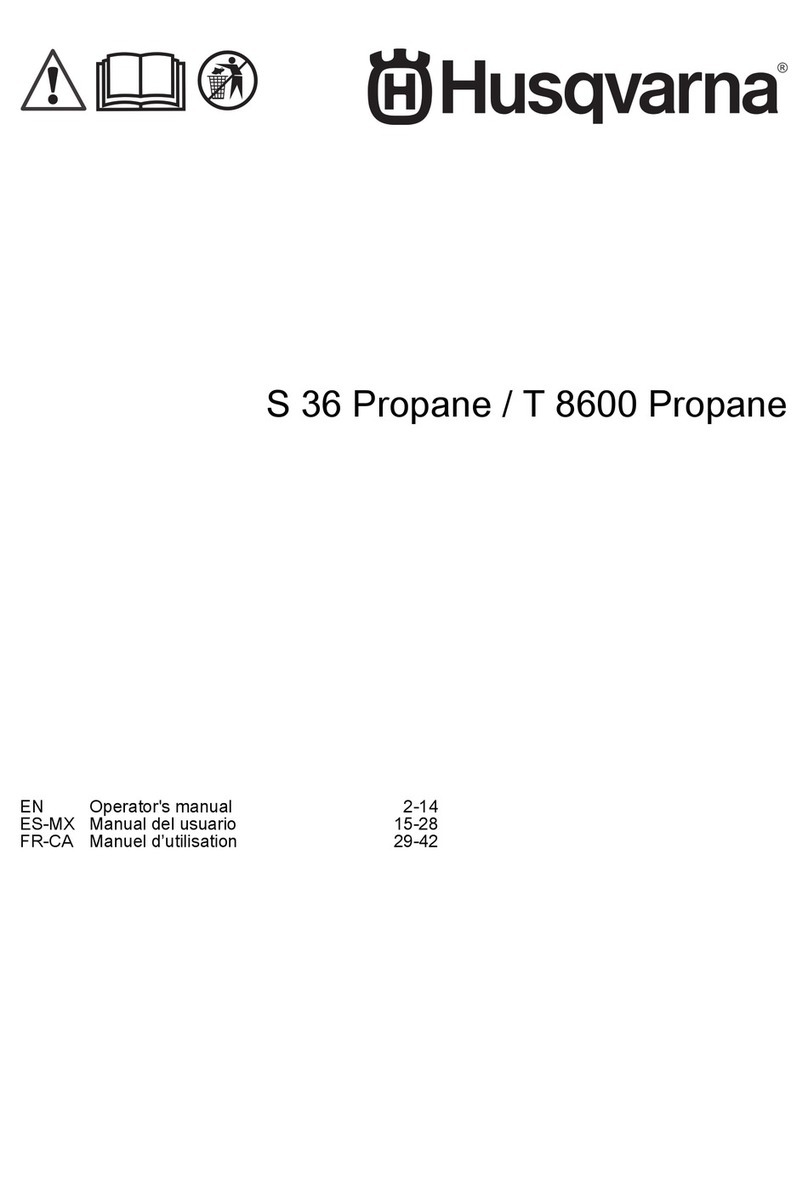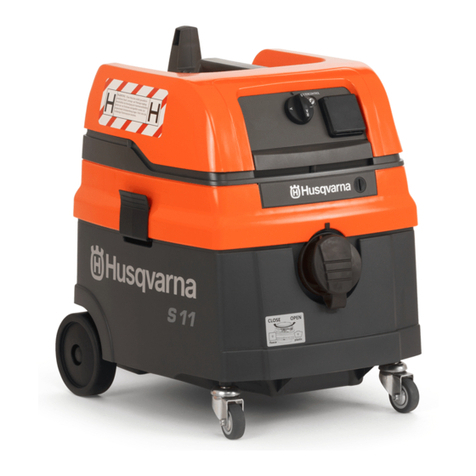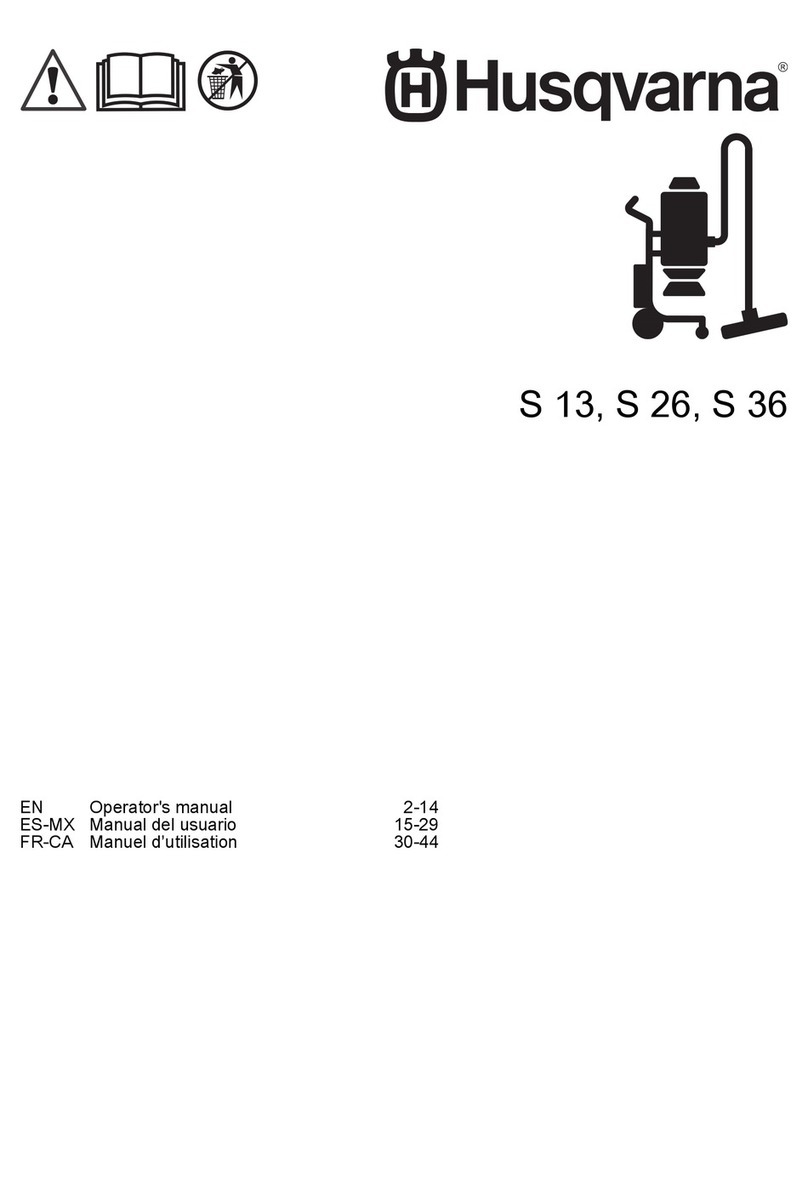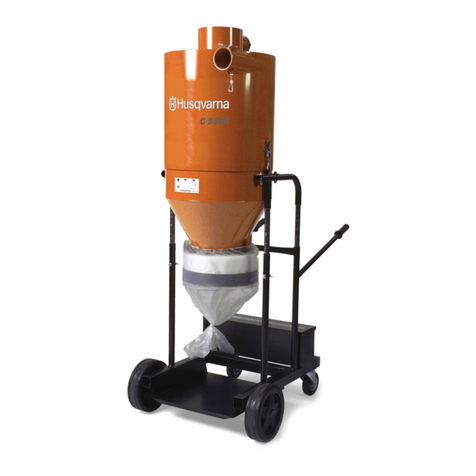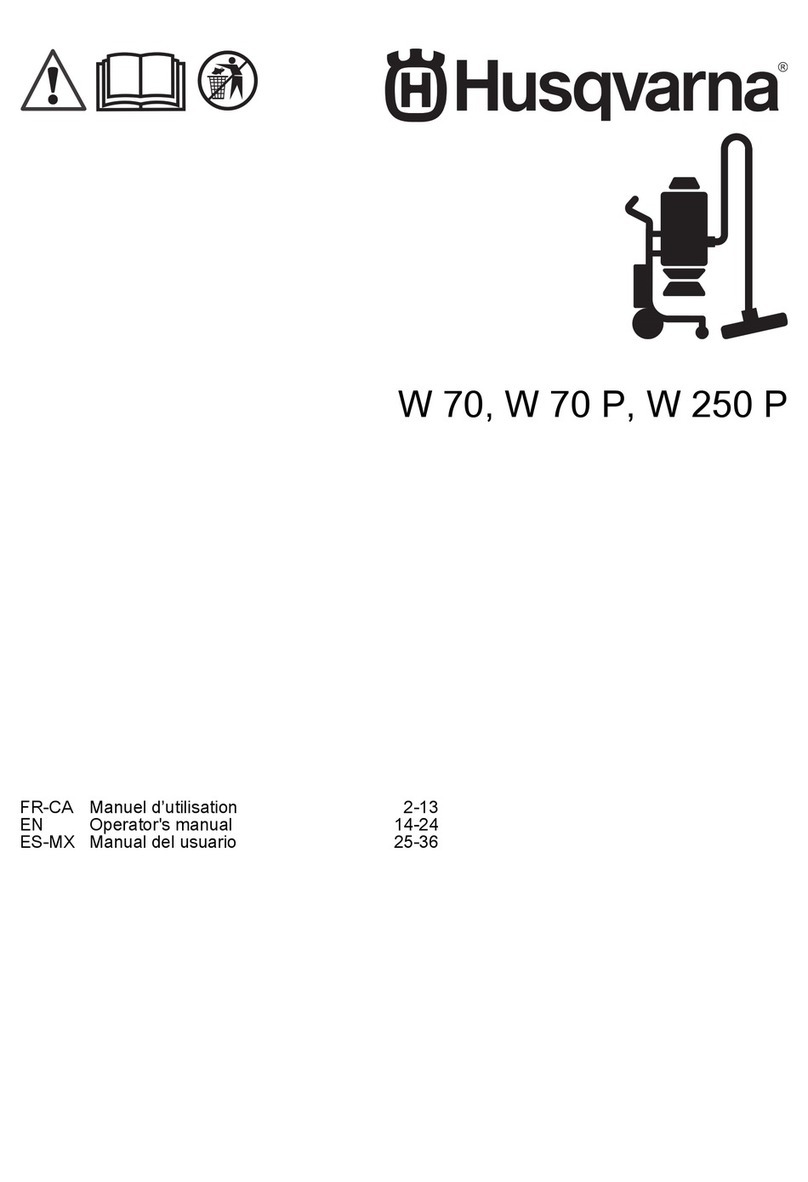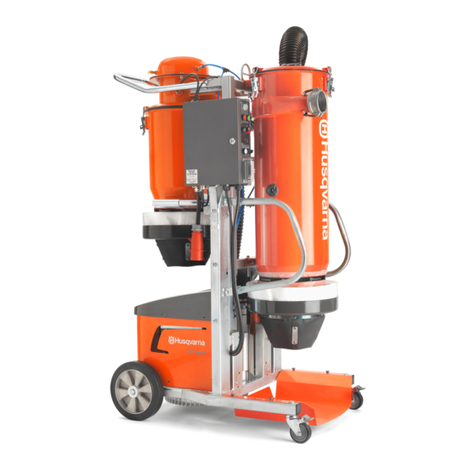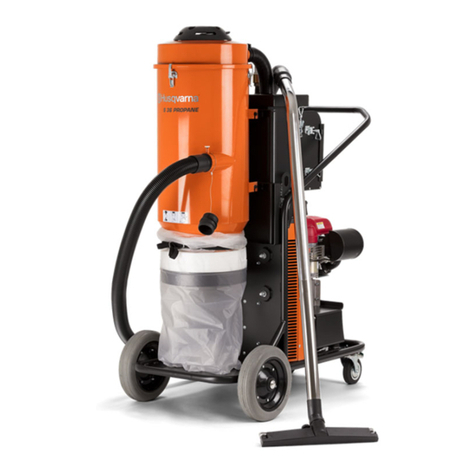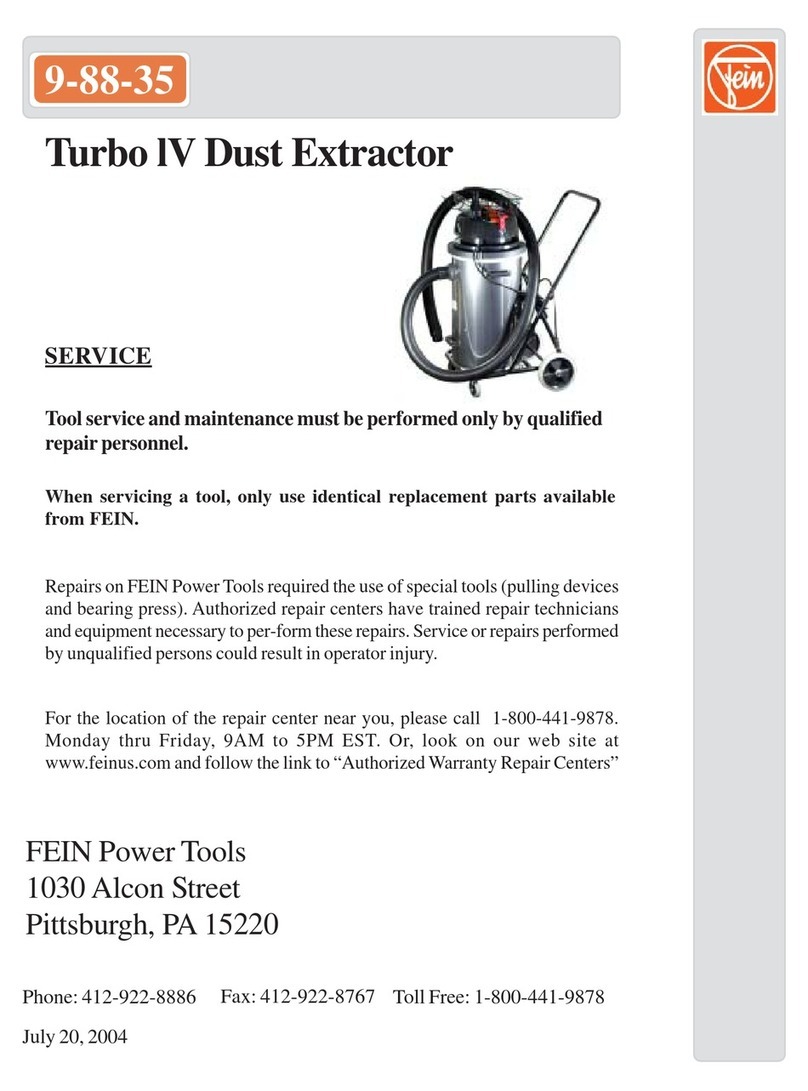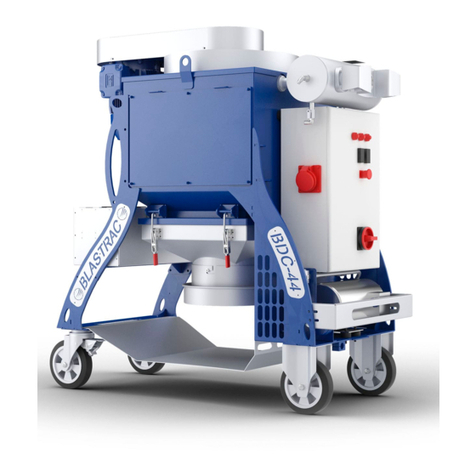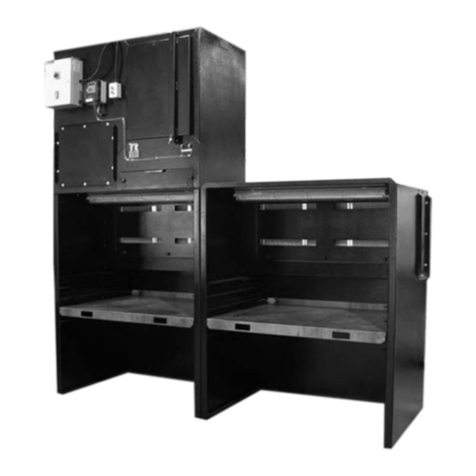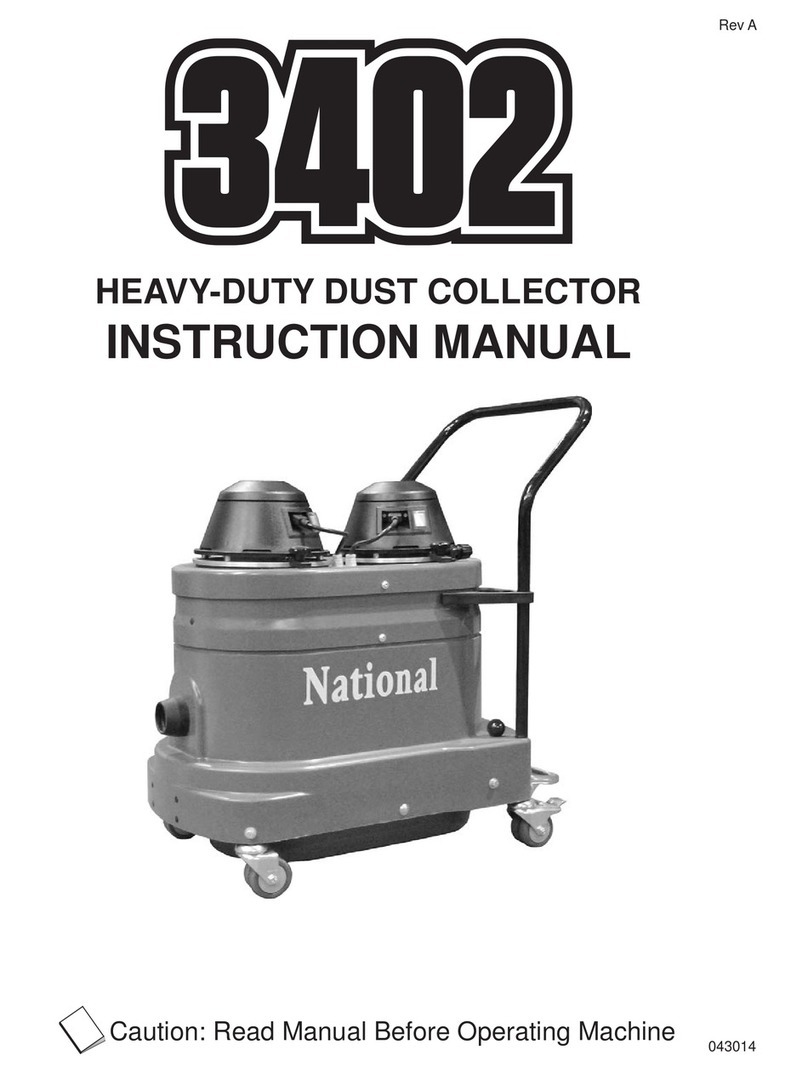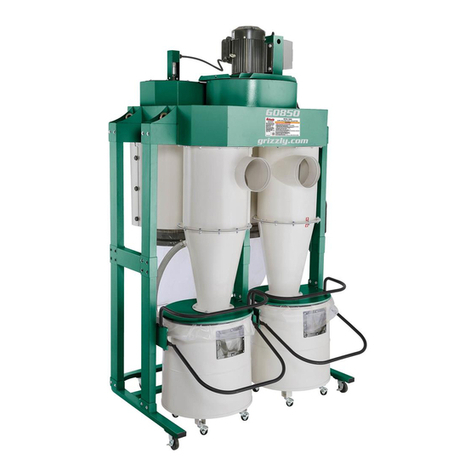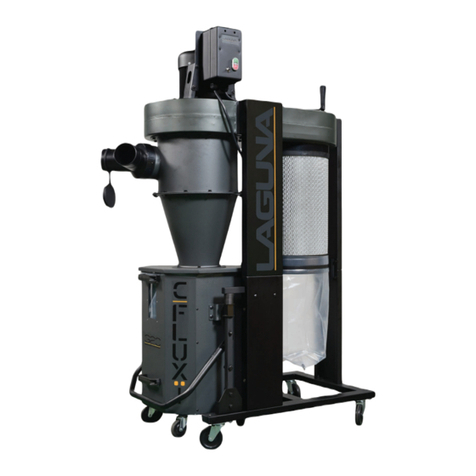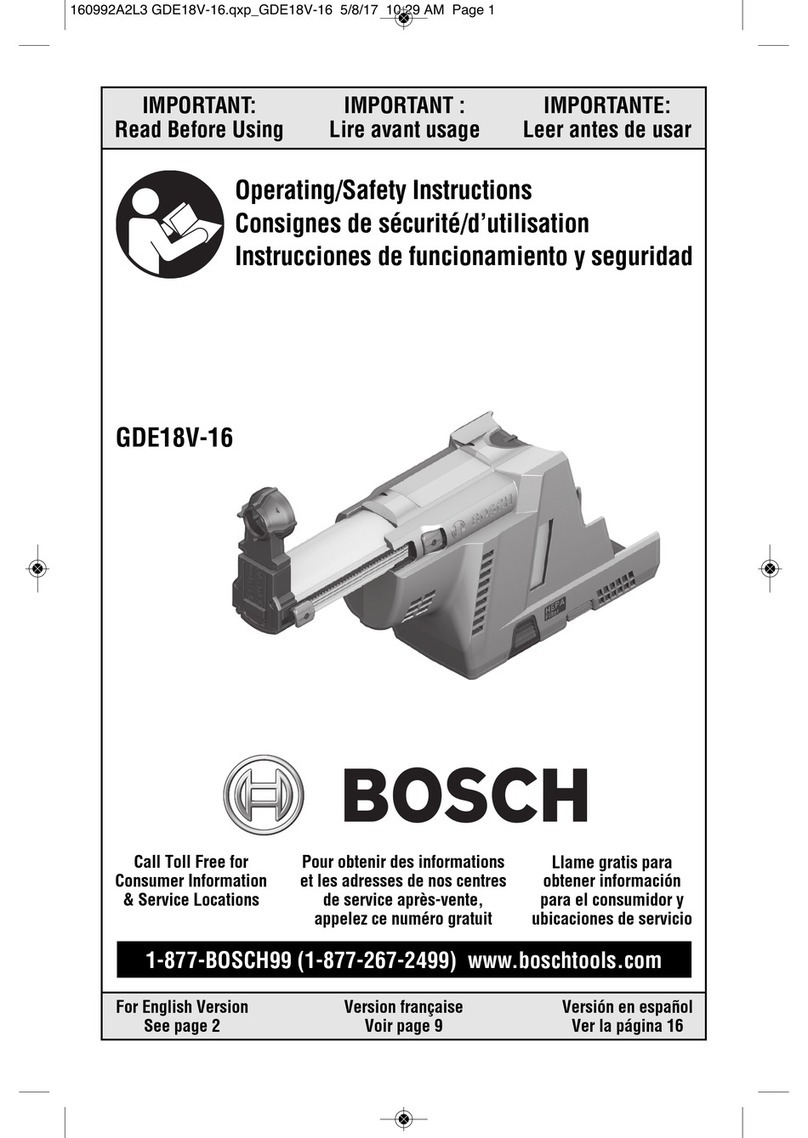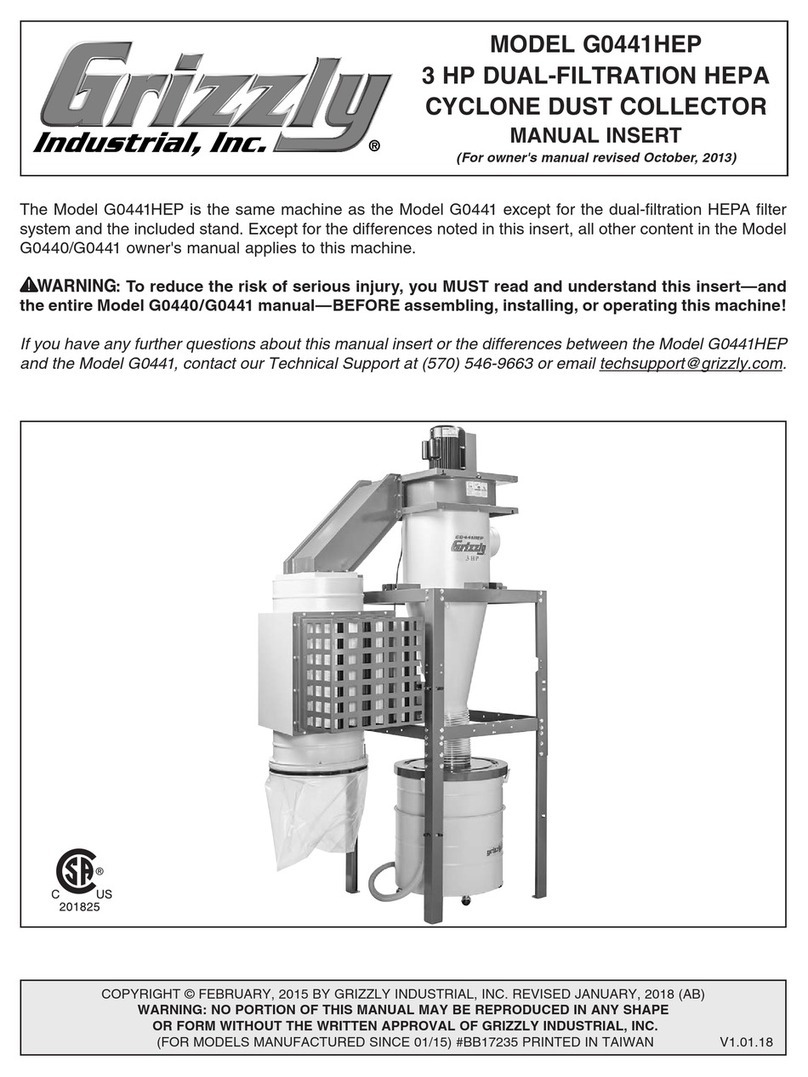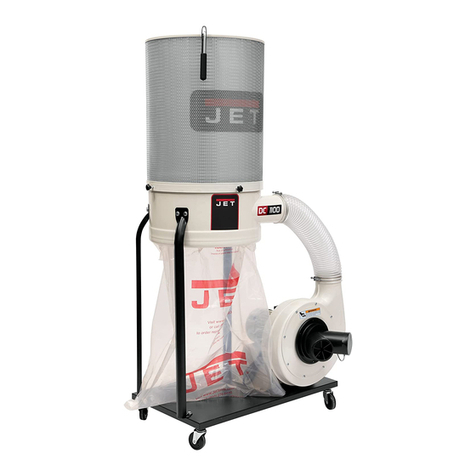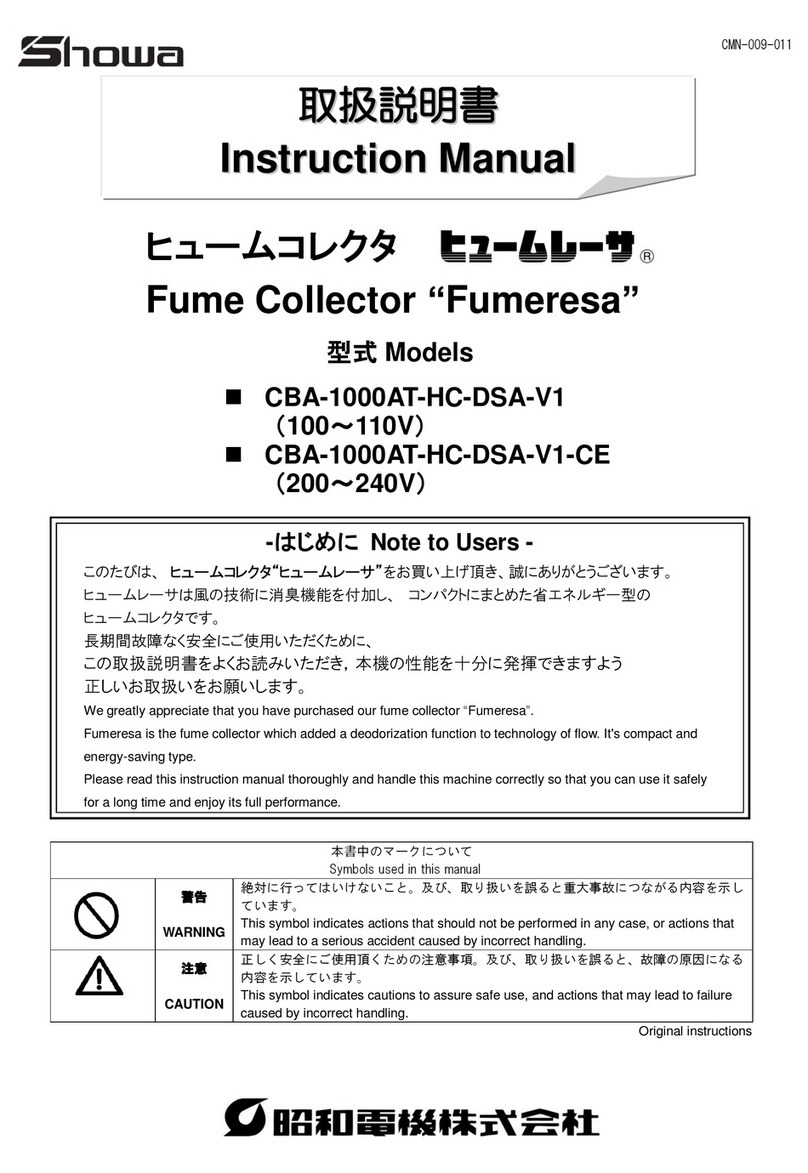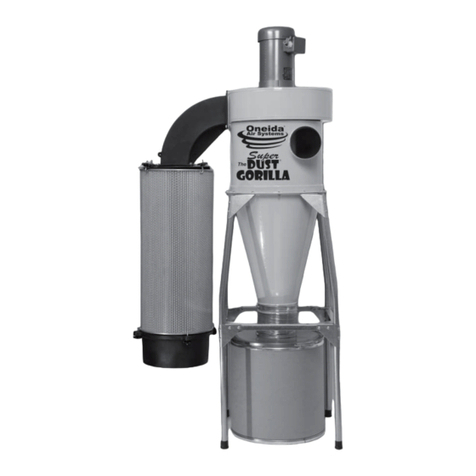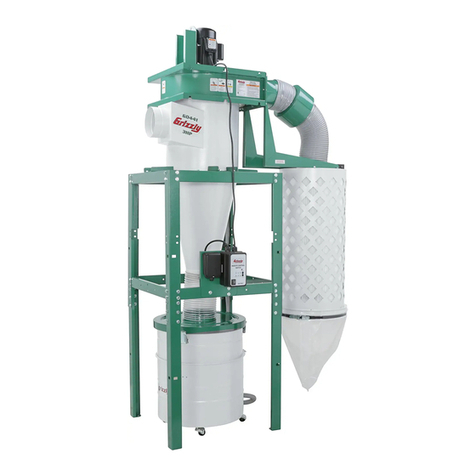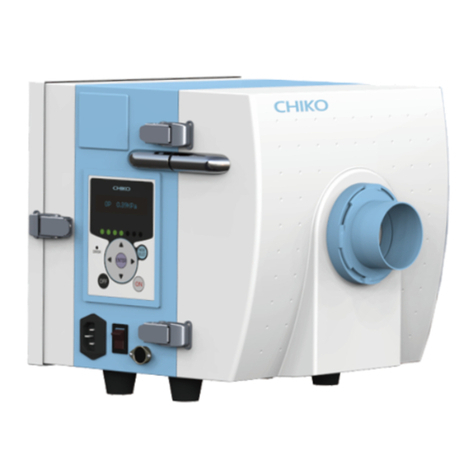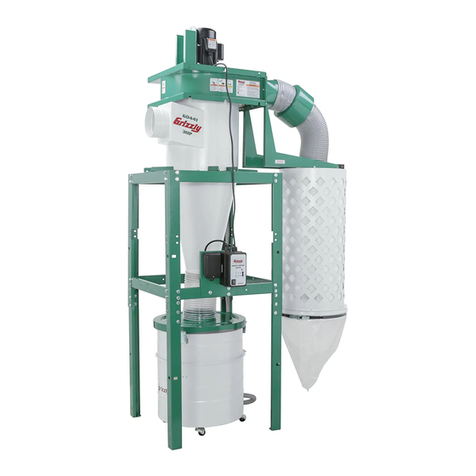
• This appliance is not suitable for use in classified
(hazardous) locations, to pick up dusts or liquids of
high explosion risk, nor mixtures of combustible dust
with liquids.
• Do not pick up anything that is burning or smoking,
such as cigarettes, matches, or hot ashes.
• Do not use to pick up flammable liquids, such as
gasoline, or use in areas where flammable vapors
may be present.
Electrical safety
WARNING: There is always a risk of
shocks from electrical products. Do not use
the product in bad weather conditions. Do
not touch lightning conductors and metal
objects. Always use the product as given in
this operator’s manual to prevent injury.
WARNING: Always use a power supply
with RCD (residual-current device). An RCD
decreases the risk of electrical shock.
WARNING: High voltage. There are
unprotected parts in the power unit. Always
disconnect the power plug before you open
the door to the electrical box.
WARNING: Only use the socket outlets
on the product for purposes specified in the
instructions.
CAUTION: The power supply from
the product or generator must be sufficient
and constant to make sure that the motor
operates without problems. Incorrect voltage
causes the power consumption and the
temperature of the motor to increase until
the safety circuit releases. The dimension
of the power cord must agree with national
and local regulations. The dimension of the
mains socket must agree with the amperage
for the electrical socket and extension cable
of the product.
If the power mains has higher system
resistance, short voltage drop can occur
when the product is started. This can
influence the operation of other products, for
example flicker on the lights.
• The power plug must match the outlet. Never modify
the plug in any way. Do not use any adapter plugs
with earthed (grounded) power tools. Unmodified
plugs and matching outlets will reduce risk of electric
shock.
• Avoid body contact with earthed or grounded
surfaces, such as pipes, radiators, ranges and
refrigerators. There is an increased risk of electric
shock if your body is earthed or grounded.
• Make sure that the power, fuse and mains voltage
are the same as the voltage shown on the rating
plate of the product.
• Always stop the product before you disconnect the
power plug.
• Always disconnect the power plug during a long
product stop.
• Do not use the product if the supply cord or power
plug is damaged. If the supply cord is damaged, it
must be replaced by the manufacturer, its service
agent or similarly qualified persons in order to avoid
a hazard. A damaged power cord can cause serious
injury and death.
• Use the power cord correctly. Do not use the power
cord to move, pull or disconnect the product. Pull the
power plug to disconnect the power cord. Do not pull
the power cord.
• Keep the product away from rain. Water that goes
into the product increases the risk of electrical shock.
• Always disconnect the power cord before you
connect or disconnect the connection for the motor
cable and the electrical enclosure.
• In order to avoid a hazard due to inadvertent
resetting of the thermal cut-out, this appliance
must not be supplied through an external switching
device, such as a timer, or connected to a circuit that
is regularly switched on and off by the utility.
• Make sure that the power supply for the product is
supplied by separate transformers that are used for
industrial purpose only.
Grounded product instructions
WARNING: Incorrect connection can
result in electrical shock. Speak to an
approved electrician if you are not sure if
your mains outlet is correctly grounded.
Do not do modifications to the power plug
from its factory specification. If the power
plug or power cord is damaged or must be
replaced, speak to your Husqvarna service
agent. Obey local regulations and laws.
If you do not fully understand the
instructions about the grounded product,
speak to an approved electrician.
Use only grounded outdoor extension cables with
grounding plugs and grounding outlet that accepts the
product power plug.
The product has a grounded power cord and power
plug. Always connect the product to a grounded mains
outlet. This decreases the risk of electrical shock.
Do not use electrical adapters with the product.
2154 - 002 - 25.10.2023 7
